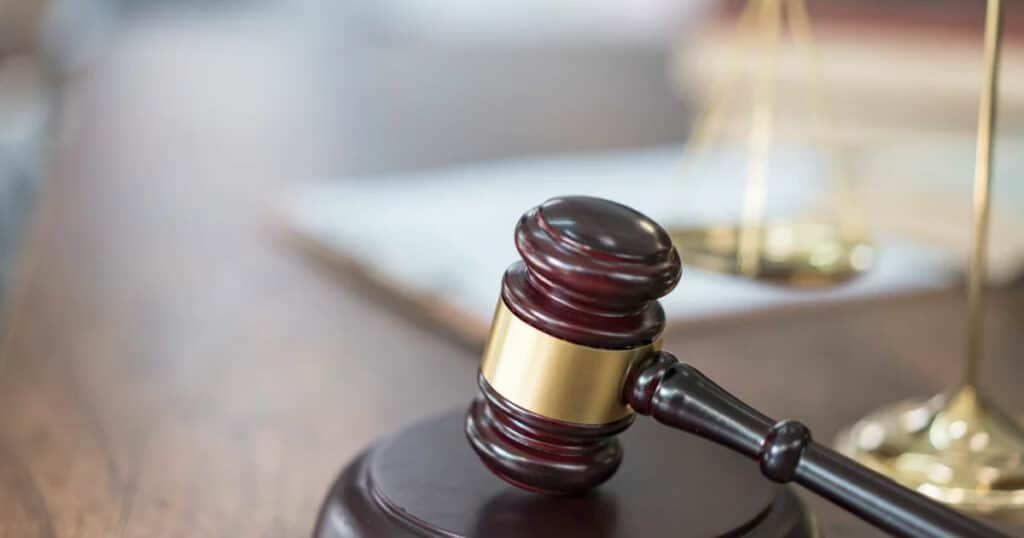Introduction
“Evidence”, by definition, is everything placed before a presiding officer in a hearing with the purpose to prove or disprove an allegation made.
Evidence may present itself in many ways and forms, some of which are topics for blogs on their own, for instance evidence solicited via entrapment, parol evidence, social media and lie detectors. In this blog I will therefore only deal with the above-mentioned forms of evidence in passing and not comprehensively.
What are the most basic categories of generally admissible evidence?
- Oral evidence derived from the testimony of witnesses.
- Documentary evidence, which could include photos, videos, and surveillance camera evidence.
- Real evidence such as physical objects and evidence created with no human intervention such as computer printouts of telephone calls, blood test results, etc.
- Formal admissions and confessions.
- Inferences drawn from the performance of participants in the hearing proceedings.
What is expected of the presiding officer when dealing with evidence placed before him/her?
Minimal legal formalities
When a labour dispute progresses to arbitration under the auspices of the CCMA, the arbitration is in some sense an extension of the internal disciplinary proceedings, although conducted as a hearing de novo.
It therefore makes sense that the more aligned the internal disciplinary proceedings are with arbitration proceedings, the better the prognosis of a favourable outcome for the employer.
Section 138 of the Labour Relations Act (LRA) provides that the arbitrator in arbitration proceedings should deal with the substantial merits of the dispute (incorporating dealing with evidence) in a way he/she considers appropriate, but to do so quickly, fairly and with a minimum of legal formalities.
Similarly, this should be the approach to be followed by presiding officers in internal disciplinary proceedings. In many instances relevant case law considered it prudent to relax, in labour matters specifically, the more stringent rules of evidence generally associated with civil and criminal proceedings.
Consider the totality of relevant evidence.
For evidence to be relevant, it has to have probative value (the ability to substantiate what is alleged) and as such should generally be admitted, unless a specific type of evidence requires a stricter approach, based on fairness and public policy.
Distinguish between the credibility and reliability of evidence.
To be credible, the evidence provided has to be adduced honestly and genuinely be perceived as fact.
To be reliable, the evidence should be devoid of circumstantial restrictions from an observational perspective.
In practice, the testimony of a particular witness may for instance be credible, because the witness testified about something he/she personally experienced and perceived to be factual, but such evidence may still be unreliable due to impaired vision occasioned by not wearing glasses, bad weather, darkness, loss of memory, etc.
Obviously, when evidence is not credible it is unreliable ipso facto.
Depending on the qualitative evaluation of the credibility and reliability of evidence by the presiding officer, due and proportional weight needs to be allocated to the evidence concerned.
Always insist on being provided with the best evidence.
Wherever possible, demand that the original of a document be provided as evidence, with proof of authenticity.
Where a statement of someone is presented, albeit a sworn or affirmatory statement, such evidence will at best be hearsay evidence, unless supported by the testimony of the deponent of the statement, being admitted by the other party or corroborated by other tested evidence.
Soliciting evidence by making use of the inquisitorial role adopted by the presiding officer.
Presiding officers in disciplinary proceedings are at liberty to procure evidence relevant to the matter at hand, beyond what the parties elected to submit.
This liberty is derived from the duty on the presiding officer to deal with the substantial merits of the matter and hence the totality of relevant information.
Where the presiding officer detects a glaring gap in relevant information, almost like a missing piece of a puzzle, he/she may call upon the party responsible for the missing piece of evidence to provide it, failing which, an appropriate inference may be drawn from such failure.
Soliciting evidence in this way should however be distinguished from the situation where a presiding officer is providing evidence directly from the chair and out of his/her own volition, which is not appropriate.
Taking “judicial notice” of some relevant factor
Although evidence has to equal facts, not all alleged facts have to be supported by evidence to be given credence.
Some facts, relevant to the matter concerned, which are well known or easily ascertainable, such as the designation or position of a person or the distance between two locations, need not be formally proven and the presiding officer may take “judicial notice” of such factors and admit it as if properly adduced.
Distinguishing between admissions and confessions
An admission is distinguished from a confession in that in the event of a mere admission, only some of the facts relevant to the matter are admitted to, which still does not exonerate the opposing party to prove the charge against the employee.
A confession, on the other hand, entails the admission of all the relevant facts underpinning the charge against the employee, thus effectively doing away with the need to provide any further proof of the charge.
The criminal law standards pertaining to the admissibility of admissions and confessions do not apply in internal disciplinary matters, where the principal yardsticks in this regard are relevance and fairness.
Ensuring compliance with the audi alteram partem-principle of natural justice.
Throughout the disciplinary proceedings the presiding officer should remain mindful of the legal requirement that a participant must be given the opportunity to be heard before any decision or conclusion is reached about a matter, the participant has a legitimate interest in.
How to approach evidence which is either inadmissible or only admissible on certain conditions.
Verdict in another legal proceeding.
Where another tribunal or court pronounced on the very same matter as the one currently before the disciplinary enquiry, the evidence duly produced in such court or tribunal may be admitted in the disciplinary case, but not the verdict reached, as it may have been subject to a different onus of proof.
Evidence of being found guilty of a similar offence in the past
Having been found guilty of a similar transgression in the past does not imply that an employee is likely to be guilty of such an offence in a subsequent disciplinary proceeding.
Such evidence is inadmissible, as each case must be decided on its own merits.
Opinions and evidence related to character
Unless an opinion is expressed by an expert witness, opinions are largely subjective and, as such, carry no or very limited evidentiary weight.
Similarly, character evidence may be given very genuinely and honestly, highlighting the good and praiseworthy traits of the employee concerned. It however lacks relevance as to whether indeed the offence was committed by the employee and therefore carries no weight.
Hearsay evidence
Hearsay evidence is information provided, the probative value of which depends on someone other than the person giving the evidence. The truth of the evidence therefore cannot be tested through cross examining the person who experienced the matter of relevance first-hand.
Affidavits, statements, medical certificates, and reports submitted instead of calling the authors or deponents of such documents to testify, constitute hearsay evidence in written form.
However, with reference to medical certificates per se, a more lenient approach is taken.
Where the employee, as the direct recipient of the medical certificate, is able to testify to the correctness of its contents, the certificate is not hearsay evidence.
In the event of the contents of the certificate however being disputed, the medical practitioner who provided the certificate would have to testify to the correctness of its contents.
Generally, hearsay evidence is inadmissible, however not absolutely so. There are circumstances under which hearsay evidence can be admitted as evidence, namely:
- When the opposing party concedes to the admission of such evidence.
- When the person on which the credibility of the evidence relies will later be called as a witness.
- When the presiding officer, in his/her discretion, decides to consider admitting the hearsay evidence, after given due consideration to the following:
- Whether it is fair, in the interest of justice, to rely on such evidence in the circumstances.
- What the nature of the evidence so provided is.
- What the purpose is for presenting this evidence.
- What the probative value of this evidence is.
- What the reason is for the original source if this evidence not testifying.
- The prejudice (if any) likely to be suffered by allowing this hearsay evidence.
- Whether the admission of this hearsay evidence will promote the interest of fairness in the hearing.
When the presiding officer, having duly considered the above-mentioned factors, decides to attach at least some weight to the hearsay evidence in the interest of fairness, he/she may:
- Admit only part of the hearsay evidence (for instance, separating the objective and subjective aspects of the hearsay evidence and admitting only the former).
- Only admit, as evidence, that which is not opposed by the other party.
- Admit the evidence on the basis that it, holistically, fits into the evidence provided in this matter.
- Allocate only very little weight to this evidence.
Sworn or affirmatory statements (e.g. affidavits)
At first glance such statements, in itself, are inadmissible as evidence since there is no way in which a piece of paper can be cross examined to test its credibility.
The norm is that the statement can only be admitted as evidence provided that the deponent of that statement testifies in person at the hearing.
There are however exceptions to this norm, which could cause such statements to be allowed as evidence, which exceptions are:
- If the opposing party concedes the content of the statement.
- If there are other testable evidence which corroborates the contents of the statements.
Photos, videos, and surveillance evidence
When the content of such evidence is disputed, this evidence must be introduced and authenticated by a person that can testify that the evidence is a true representation of the objects and persons which it purports to represent and that it was not altered or manipulated.
Electronic business records
In consequence of Section 15 of the Electronic Communications and Transactions Act (ECT), computer printouts of business records made in the ordinary course of business:
- are admissible against any person in civil, criminal, and disciplinary proceedings under any law and administrative proceedings, without the testimony of the one who made the entry.
- constitute rebuttable proof of the facts contained in such documents, provided that it is accompanied by a certificate from a manager stating that the contents thereof are correct and accurate.
In essence, the ECT Act creates an exception to the hearsay rule for electronic business records and places an evidentiary burden on the person disputing the contents to prove that the contents are not correct and accurate. This exception is premised on a rebuttable presumption of admissibility.
Evidence of intoxication
Evidence in this regard is either premised on a technical foundation (medical or breathalyser tests) or on eye-witness evidence based on human observation, knowledge, and experience.
The more apparent and manifest the physical manifestations of intoxication are as observed by credible and reliable lay witnesses, the more readily the technical evidence can be dispensed with from an evidentiary point of view.
The more uncertain the physical manifestations of intoxication may be, the greater the need for technical evidence.
Evidence derived from intercepting and monitoring employees’ communications
Where the employer provides the devices and means of communication (phones, computers, e-mail, internet) the employer may intercept and monitor communications happening on such platforms or devices, provided that:
- Employees are advised beforehand of such intercepting and monitoring in policy documents or other means of communication.
- The intercepting and monitoring are formally approved by the head of the company or head of department.
- The employer had good reason and reasonable suspicion related to the offence of improper use of the communications system.
- Less drastic methods of detection were not available or feasible.
Evidence derived from searches of person and/or workstation, monitor of premises and employee behaviour
All of these searches and surveillance practices are acceptable means of obtaining evidence, for as long as these measures are made general knowledge within the premises, there is a good reason for resorting to these measures, it is carried out discreetly and with due regard to human dignity, surveillance of the premises is restricted to operational areas and less intrusive means of obtaining the evidence concerned were not readily available.
Entrapment evidence
There are two basic prerequisites for a fair entrapment exercise, namely:
- A pre-existing suspicion about the employee concerned.
- The way in which the entrapment was carried out did not go beyond providing an opportunity to commit the suspected offence.
From a pure practical point of view, entrapment is more acceptable if the situation or opportunity created is a situation which the employee is likely to encounter in his/her working environment. For instance, presenting a bank teller with a cash deposit where the cash provided is more than what is specified on the accompanying cash deposit slip.
The wrong and unethical way to execute an entrapment is to set a trap for the employee by creating a situation which he/she is not likely to ever be confronted within work related context. Example – presenting the employee with uncut diamonds enticing him/her to enter into an illegal transaction. This amounts to enticing the employee to commit a criminal offence and goes beyond acceptable norms of entrapment.
Lie detector evidence
As a general rule, lie detector evidence, on its own, is inadmissible. The results of lie detector tests have to be corroborated by other testable evidence, in order to be allocated any significant weight.
Without the necessary corroboration, lie detector evidence constitute nothing more than irrelevant opinion evidence.
Parol evidence
The parol evidence rule is based on the presumption that the written contract contains the entire agreement between the parties and that extrinsic evidence cannot be used to vary the terms of the contract.
This rule originated from the law of contract and its purpose is probably to create legal certainty. Its application within labour law is however a bit controversial since labour law deals particularly with fairness as the central consideration.
Consequently, decision makers in disciplinary matters may look beyond the written contract in order to determine the real intention and relationship between the parties. This becomes necessary, for instance, to determine whether a contract that was ostensibly a contract with an independent contractor, was indeed the case.
Admittedly, there may indeed be more aspects to the deployment of evidence in disciplinary hearings, but what has been touched on herein should cover the majority of situations a presiding offices is likely to encounter.





